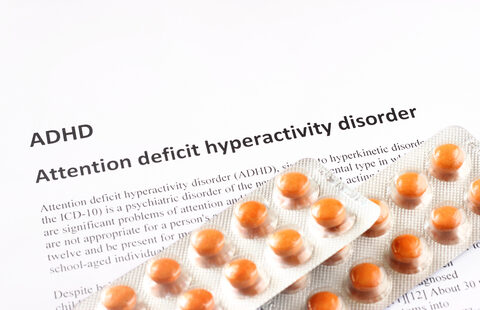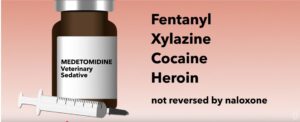In “Have We Been Thinking About A.D.H.D. All Wrong?”, The New York Times began with a discussion of the Multimodal Treatment of Attention Deficit Hyperactivity Disorder Study, or M.T.A. for short. It was one of the largest studies ever undertaken of the long-term effects of any psychiatric medication. When the initial results were published in 1999, they underscored the effective use of stimulant medication to treat ADHD. “After 14 months of treatment, the children who took Ritalin every day had significantly fewer symptoms than the ones who received only behavioral training.” However, further research indicated that advantage completely faded in 36 months.
James Swanson and a team of researchers received funding from the National Institute of Mental Health to do the M.T.A. study. It was a multisite randomized control study that compared stimulant treatment for ADHD with nonpharmaceutical methods such as parent training and behavioral coaching. There were approximately 600 individuals in the study, all from 7 to 9 years old and diagnosed with ADHD. They were divided into treatment groups where some were given Ritalin, some received high-quality behavioral training, others were given a combination. And a comparison group of individuals were left alone to “figure out their own treatment.”
Swanson and the M.T.A. team of researchers were encouraged by the initial results, which said Ritalin worked. “This was good news not only for families with children who struggled with attention issues but also for the corporations that offered them pharmaceutical solutions.” Swanson and his colleagues continued to follow those who were in the M.T.A. study, and by the mid-2000s, they realized their further data was telling a different story. It was still true that after 14 months, the children taking Ritalin behaved better than those in the other groups. “But by 36 months, that advantage had faded completely, and children in every group, including the comparison group, displayed exactly the same level of symptoms.”
Many of the leading ADHD researchers have expressed concerns over the apparent disconnect between the emerging scientific understanding of ADHD and the way the condition is still treated in clinics and doctor’s offices. ADHD is clinically defined as a medical disorder that requires a medical solution. It is caused by “inherent deficits in children’s brains;” and the medications given to them are supposed to repair those deficits. One researcher in London said he thought they were now farther away from identifying the causes of ADHD than when they started. “We have a clinical definition of ADHD that is increasingly unanchored from what we’re finding in our science.”
A related concern is the steady increase in the ADHD diagnosis rate. Swanson expected it would plateau at 3 percent. “Instead, it kept rising, hitting 5.5 percent of American children in 1997, then 6.6 percent in 2000.” The CDC reported an estimated 7 million (11.4%) U.S. children aged 3-17 years have ever been diagnosed with ADHD. Boys (15%) were more likely to be diagnosed with ADHD than girls (8%) and nearly 78% of children with ADHD had at least one co-occurring condition such anxiety, depression or a behavior or conduct problem.
The preferred treatment for A.D.H.D. remains stimulant medications, including Ritalin and Adderall, and the market for those stimulants has expanded rapidly in recent years, in step with the growth of the diagnosis. From 2012 to 2022, the total number of prescriptions for stimulants to treat A.D.H.D. increased in the United States by 58 percent. Although the prescription rate is highest among boys ages 10 to 14, the real growth market today for stimulant medication is adults. In 2012, Americans in their 30s were issued five million prescriptions for stimulants to treat A.D.H.D.; a decade later, that figure had more than tripled, rising to 18 million.
Another CDC report indicated there were an estimated 15.5 million adults with an ADHD diagnosis, about 5% of U.S. adult population. Half of those adults received their diagnosis in adulthood, and around 50% of U.S. adults with ADHD take medication. A consequence of the rapid increase in ADHD diagnosis and treatment was that almost three quarters had problems filling their prescriptions because the medication was not available. See, “Is Adult ADHD the Latest Fad Diagnosis? Part 2” and “Coming Up Short with Adderall and Other ADHD Drugs.”
That ever-expanding mountain of pills rests on certain assumptions: that A.D.H.D. is a medical disorder that demands a medical solution; that it is caused by inherent deficits in children’s brains; and that the medications we give them repair those deficits. Scientists who study A.D.H.D. are now challenging each one of those assumptions — and uncovering new evidence for the role of a child’s environment in the progression of his symptoms. They don’t question the very real problems that lead families to seek treatment for A.D.H.D., but many believe that our current approach isn’t doing enough to help — and that we can do better. But first, they say, we need to rethink many of our old ideas about the disorder and begin looking at A.D.H.D. anew.
ADHD Has Biological and Environmental Influences
“Have We Been Thinking About A.D.H.D. All Wrong?” said some scientists have begun to argue that viewing ADHD is an unchanging, straightforward medical condition, with clear diagnostic boundaries is both inaccurate and unhelpful. The traditional notion that there are people with ADHD, with something clinicians can objectively measure and define “just doesn’t seem to be the case.”
While ADHD is defined in the DSM as a neurodevelopmental disorder, the symptoms of ADHD can be produced by various environmental causes. Problems sitting still or maintaining attention can also be symptoms of a serious head injury, fetal alcohol syndrome, childhood lead exposure, early trauma and more. “There is also a high rate of overlap between the symptoms of A.D.H.D. and those of other psychiatric disorders, including depression, anxiety, dyslexia and autism.” According to the CDC, nearly 78% of children with ADHD have at least one other co-occurring condition. This complicates the efforts to portray ADHD as a distinct, biological disorder with a clear biomarker.
Most scientists agree ADHD is produced by a combination of biological and environmental influences, but there is little consensus on the relative importance of each. This has implications for the ADHD field, particularly for the question of using medication. If it’s no longer clear ADHD has a pure biological basis, “does it make sense that our go-to treatment is still rooted in biology?”
The roots of the current treatment model go back to 1937, when a Harvard-trained psychiatrist named Charles Bradley published (in the dramatically named American Journal of Insanity) the results of an experiment in the clinic he ran for children with behavioral problems in East Providence, R.I. For one week, Bradley gave 30 of his young patients a daily dose of benzedrine, an amphetamine then popular among jazz musicians and college students. Fourteen of the children responded in what Bradley described as “a spectacular fashion.” From the day of their first dose, their teachers reported “remarkably improved school performance.” Overnight, the students seemed, for the first time, interested in their schoolwork. They became more “placid and easygoing,” and they spontaneously made comments to their teachers like “I feel fine and can’t seem to do things fast enough today” and “I start to make my bed, and before I know it, it is done.”
The current treatment for ADHD hasn’t moved very far from Bradley’s discovery. Adderall, the current leading treatment for ADHD, is a type of amphetamine, just like the benzedrine pills Bradley give his patients. “The other leading prescription stimulants, including Ritalin, are all variations on the same chemical compound.”
No Long-Term Effects with Medication
The original M.T.A. study also showed the strong effect of stimulant medication on behavior and essentially no impact on academic achievement. Swanson was troubled by those results in the early 2000s, but the bigger issue for him was the fact that the behavioral benefits under stimulants faded away so quickly. Despite analysis and reanalysis of the data, after the first year of treatment, “the relative positive effects of Ritalin on behavior started to shrink, and by the end of the third year, they had disappeared altogether.” In 2017, Swanson and the M.T.A. group published another follow up, tracking the subjects until age 25. Their ADHD symptoms were no better than those who stopped taking the medication or who had never started.
After three decades of studying stimulants, Swanson differs with many of his colleagues on their value. “I don’t agree with people who say that stimulant treatment is good,” he told me. “It’s not good.” He acknowledges that medication can often produce short-term improvements in children’s behavior. But, he says, “there is no long-term effect. The only long-term effect that I know of has been the suppression of growth. If you’re honest, you should tell kids that, look, if you’re interested in next week or next month or even the next year, this is the right treatment for you. But in the long run, you’re going to be shorter. How many kids would agree to take medication? Probably none.”
ADHD Exists on a Continuum
In October of 2024, the M.T.A. group published a new study that examined how ADHD symptoms in M.T.A. participants changed over the course of their childhood and young adulthood. The researchers showed that for most subjects, their symptoms and level of impairment fluctuated over time, often quite substantially. Only about 11% of the children who started the study with an ADHD diagnosis experience symptoms consistently year after year. More often, their symptoms would come and go.
This challenges the medical model of ADHD, that it is a binary, biological problem—you either have ADHD or you don’t. Emerging from current scientific research, this alternative model suggests ADHD exists on a continuum. The individual could experience ADHD symptoms as much because of where he is as because of who he is. And the next year, if things change in his surroundings, the ADHD symptoms might change as well.
Armed with that understanding, he and his family can decide whether medication makes sense — whether for him, the benefits are likely to outweigh the drawbacks. At the same time, they can consider whether there are changes in his situation, at school or at home, that might help alleviate his symptoms. If he is also experiencing other psychological conditions — anxiety or depression or post-traumatic stress — they can take steps to address those deeper issues, independent of his inability to focus in math class.
While there are drawbacks to this sense of ADHD, it has two important advantages. First, it reflects the latest the latest scientific understanding of ADHD more accurately. Second, it gives children a future where things might actually improve. Not because their brains were chemically modified in a way that helped them to fit better into the world, “but because they find a way to make the world fit better around their complicated and distinctive brains.”





